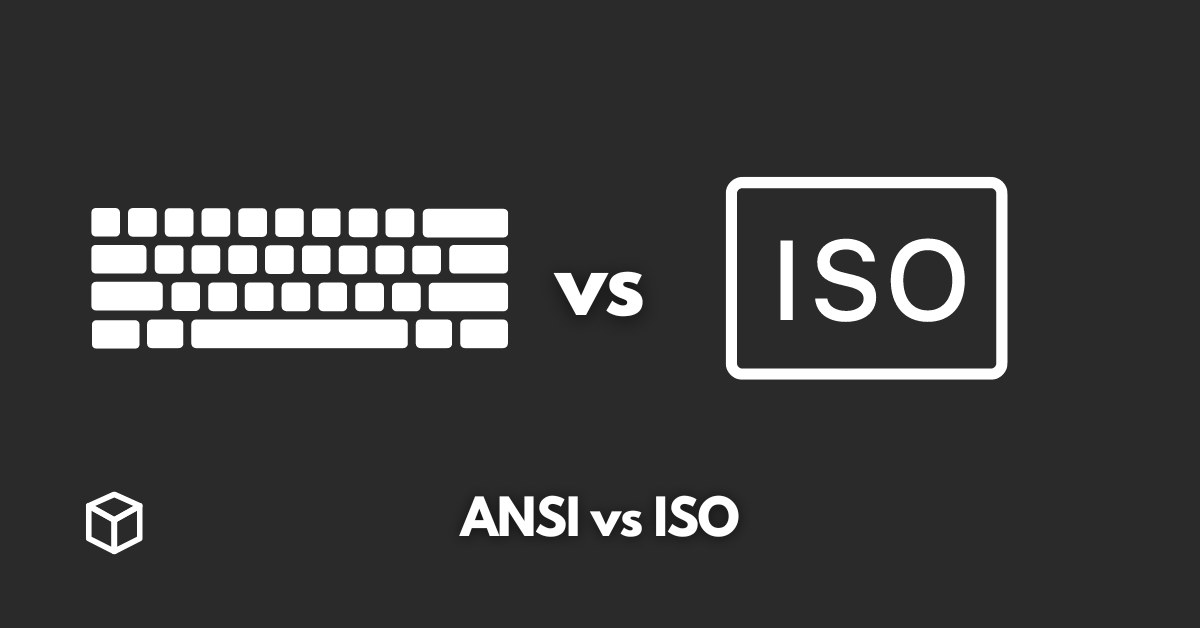When it comes to computer keyboards, you may have heard the terms ANSI and ISO thrown around, but what do they actually mean?
In this article, we’ll take a detailed look at the differences between ANSI and ISO keyboards, and help you understand which one may be the best fit for you.
Before diving into the specifics, let’s take a quick look at the history of computer keyboard design.
The first mechanical keyboard was invented in the late 1800s, but it wasn’t until the 1970s that the first electronic keyboard was created.
Since then, keyboard design has evolved to include a variety of layouts and features, including the ANSI and ISO keyboard standards.
ANSI Keyboards
ANSI stands for American National Standards Institute, and as the name suggests, ANSI keyboards are primarily used in the United States.
These keyboards have a layout and design that is similar to the standard QWERTY keyboard layout that most of us are familiar with.
One of the main features of ANSI keyboards is their key size and spacing.
The keys are generally larger than those found on ISO keyboards, and the spacing between the keys is also wider.
This can make typing on an ANSI keyboard feel more comfortable for some users.
Another advantage of ANSI keyboards is their wider availability.
Because they are primarily used in the United States, you’ll find them more easily in local stores and online retailers.
It means that if you’re looking for a keyboard that is familiar and easy to find, an ANSI keyboard might be the right choice for you.
ISO Keyboards
ISO keyboards, on the other hand, are primarily used in Europe and other international markets.
These keyboards have a slightly different layout and design compared to ANSI and QWERTY keyboards.
One of the most notable differences is the size and placement of the Enter key.
On an ISO keyboard, the Enter key is larger and placed vertically, while on an ANSI keyboard it is smaller and placed horizontally.
This can make typing on an ISO keyboard feel more comfortable and more efficient for some users.
Another advantage of ISO keyboards is that they come with a dedicated key for the Euro symbol.
This can be especially useful for users who frequently type in different languages or work with currency.
Comparison of ANSI and ISO Keyboards
While ANSI and ISO keyboards may look similar at first glance, there are several key differences to consider when choosing between the two.
One of the main differences is the layout and design.
As mentioned earlier, the key size and spacing is different, which can affect typing speed and accuracy.
Further, certain keys may be placed in different locations, which can take some getting used to.
Another important consideration is compatibility. Some software and operating systems may not be fully compatible with ISO keyboards, which can lead to issues with special characters and shortcut keys.
Finally, it’s worth noting that the impact on typing speed and accuracy can vary depending on the user.
Some people may find that typing on an ANSI keyboard feels more natural, while others may prefer the layout and design of an ISO keyboard.
Choosing the Right Keyboard
When choosing between an ANSI and ISO keyboard, there are several factors to consider, such as personal preference, language requirements, and typing habits.
One of the best ways to determine which keyboard layout is right for you is to try them out.
Many online retailers and computer stores allow you to test out different keyboard layouts before making a purchase.
This can give you a better idea of how the keyboard feels and whether it will work for you.
Moreover, there are plenty of resources available for finding ANSI and ISO keyboards, both online and in-store.
Many major retailers such as Best Buy, Amazon, and Newegg offer a variety of ANSI and ISO keyboards, as well as other international keyboard layouts.
Further, many computer peripheral manufacturers such as Logitech, Razer and Corsair also offer both ANSI and ISO keyboards.
Conclusion
In conclusion, ANSI and ISO keyboards are two popular keyboard layouts that are primarily used in the United States and Europe respectively.
While they may look similar at first glance, they have several key differences in terms of layout, design, key size and spacing, compatibility, and typing speed and accuracy.
Ultimately, the choice between an ANSI and ISO keyboard comes down to personal preference and usage.
It’s important to consider your typing habits, language requirements, and whether you’re looking for a more familiar or a more efficient layout.
We hope this post has helped you understand the differences between ANSI and ISO keyboards and make an informed decision when purchasing a new keyboard.




